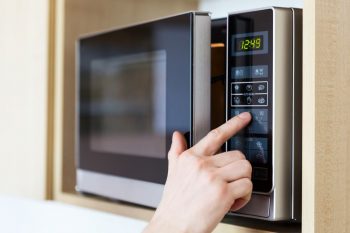
Ceiling fans are a staple in many homes, providing a cost-effective and energy-efficient way to cool down during hot summer months. However, if you’ve ever noticed your ceiling fan blowing hot air, you’re not alone. This issue can be puzzling, but there are several possible explanations and solutions that can help you restore your fan’s cooling capabilities.
Your ceiling fan may be blowing hot air because it is rotating in the wrong direction, it is placed near a heat source, or it is too small for the room. Ceiling fans should rotate counterclockwise in the summer to push cool air down. Also, ensure your fan is not near a sunny window or other heat sources, and that it is the right size for your room. If your fan is part of an air conditioning unit, it could be blowing hot air due to blocked vents or a clogged air filter. Regular maintenance and proper placement can help resolve this issue.
Understanding Ceiling Fan Functionality
First, let’s clarify a common misconception: ceiling fans do not actually cool the air in a room; they circulate it. The cooling sensation you feel is due to the wind-chill effect, where the fan’s breeze helps evaporate sweat from your skin, making you feel cooler. If the air in the room is already warm, the fan will simply move this warm air around, which could give the impression that it’s blowing hot air.
The Impact of Fan Direction
One of the most common reasons a ceiling fan blows hot air is that it’s spinning in the wrong direction. Ceiling fans are designed to rotate in two different directions—clockwise and counterclockwise—to accommodate different seasons.
During the summer, your fan should rotate counterclockwise. This direction pushes cool air down and creates a wind-chill effect, making the room feel cooler. If your fan is spinning clockwise, it’s set for winter mode, where it pushes warm air (which naturally rises) down from the ceiling.
To change the direction of your fan, look for a small switch on the side of the fan’s motor housing. Flipping this switch will change the rotation of the blades.
Importance of Fan Placement
Placement of the fan can also affect its performance. A fan placed near a sunny window, for example, may draw in and circulate warm air from outside. Consider moving the fan away from direct sunlight or other sources of heat to avoid this issue.
The Role of Room Size and Fan Size
The size of your room and your fan can also impact the fan’s ability to cool the room effectively. If your fan is too small for your room, it may not circulate air effectively. Similarly, if your fan is installed too high up (fans should ideally be 8-9 feet above the floor), it may not cool your space effectively.
Dealing with Air Conditioning Units
If your ceiling fan is part of an air conditioning unit and it’s blowing hot air, it could be due to poor ventilation, blocked vents, or a clogged air filter. Regular maintenance, such as cleaning or replacing air filters and ensuring vents are not obstructed, can prevent these issues.
Preventive Measures
Regular maintenance and seasonal adjustments can prevent your ceiling fan from blowing hot air. Ensure your fan is set to rotate counterclockwise during summer, clean accumulated dust from fan blades, and carry out periodic checks on the fan motor. Proper insulation in your home and installation of energy-efficient ceiling fans can also contribute to maintaining a comfortable temperature.
In conclusion, while it may be disconcerting to find your ceiling fan blowing hot air, there are several steps you can take to address and prevent this issue. Remember, your ceiling fan is there to assist in creating a comfortable living environment—it’s your job to give it the right conditions to do so.
Frequently Asked Questions
What is the wind-chill effect?
The wind-chill effect is a phenomenon where a breeze or wind speeds up the evaporation of sweat from your skin, making you feel cooler.
What is the ideal height for ceiling fan installation?
The ideal height for ceiling fan installation is between 8 to 9 feet above the floor. This height allows for optimum air circulation and cooling effect.
How often should I clean or replace the air filters of my ceiling fan?
It is generally recommended to clean or replace the air filters of your ceiling fan every 1 to 3 months, depending on usage and air quality in your area.
What happens if my ceiling fan is too small for my room?
If your ceiling fan is too small for your room, it may not circulate air effectively, reducing its cooling capabilities.
How can I determine if my ceiling fan is set for summer or winter mode?
You can determine the mode of your ceiling fan by observing the direction of its rotation. If it’s rotating counterclockwise, it’s set for summer mode. If it’s spinning clockwise, it’s set for winter mode.












